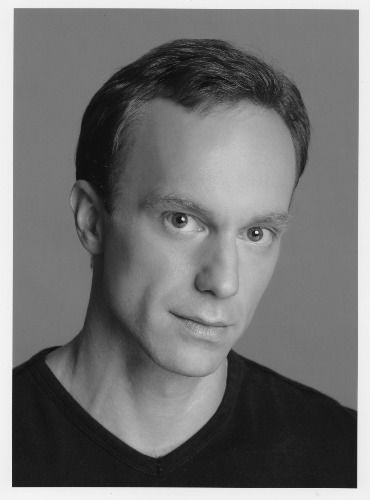Peter Boal, with the New York City Ballet / New York State Theater, NYC / through February 27, 2005; April 25 – June 26, 2005

At the end of the 2005 spring season, the New York City Ballet’s Peter Boal will retire from the company (and its affiliate, the School of American Ballet, where he has been a leading instructor) to become Artistic Director of Seattle’s Pacific Northwest Ballet. The appointment is undoubtedly good for him at this stage of his career. And it will be good for the Seattle company, which, under the leadership of Kent Stowell and Francia Russell, has built a strong repertory of scrupulously mounted Balanchine works that serve as a bulwark against the corrupted taste of our times.
Meanwhile, Boal’s admirers are flocking to his remaining NYCB appearances, realizing that they’re unlikely to see this exceptional artist in one or another key role ever again. I saw him recently in Square Dance, illustrating two of his typical guises. Providing the most sympathetic support imaginable to his partner, Megan Fairchild, who was new to her role, he was the consummate gentleman. In the celebrated solo adagio—one of Balanchine’s consummate creations for the male dancer—he was nobility itself, his eloquence fusing physical perfection with a suggestion of profound emotions that lie beyond words.
Boal is a rare commodity—a great dancer who is not a great star. Charisma, an essential element for stardom, is not part of his makeup—though he’s a disarmingly nice fellow on- and offstage. (I’ve known him, slightly, since he was in the Children’s Division of SAB, the boy with the breathtaking arabesque. I did my first interview with him when he was so young, I got to meet his mother. Years—and many reviews and several interviews—later, I’d run into him in a neighborhood playground where he was caretaking his kids and I my grands.)
The glory of Boal’s dancing lies in the fact that it is not dependent on expressive personality. Indeed, it’s entirely free from self-advertisement. Self-effacing, it serves at the altar of classicism, which is based on values that are impersonal, objective, nearly abstract. Boal’s dancing is purity itself. The clear beauty of his technique—evident in his earliest performances as a child—is Platonic. Other impeccable technicians can seem cold or dry in performance, but not Boal. Calmly and quietly (he’s the epitome of modesty and reticence), he infuses his work with human warmth and tenderness. What’s more, he displays a luminous quality that goes beyond what the body alone can convey into the domain of the spirit.
At 39, Boal has already arrived at the moment when a dancer’s technical prowess inevitably diminishes. Fortunately, in artists of his type—thoughtful, sensitive, simple in their sincerity of purpose—the soul goes on blossoming. Running a classically based company in the era of flash and trash is no easy job, but the integrity of Boal’s temperament may just carry him through.
Note: The New York City Ballet has scheduled a gala tribute to Peter Boal for June 5. Next week he is scheduled to appear with the NYCB in Prodigal Son on Tuesday, February 1, and Saturday, February 5 (evening), and in Apollo on Sunday, February 6 (afternoon). He will dance with his own chamber group, Peter Boal & Company, at the Joyce Theater, March 15-20, in a program emphasizing contemporary choreography.
Photo: Paul Kolnik
© 2005 Tobi Tobias



